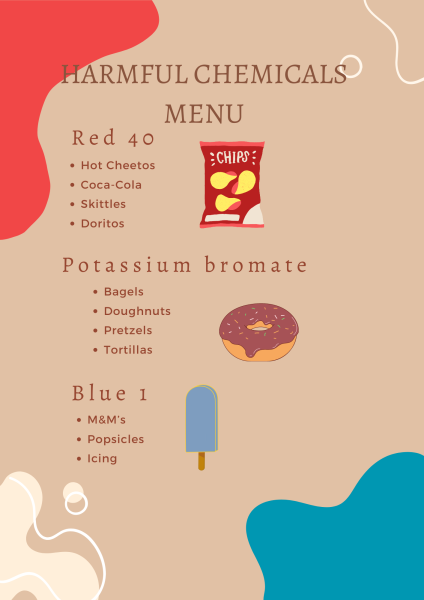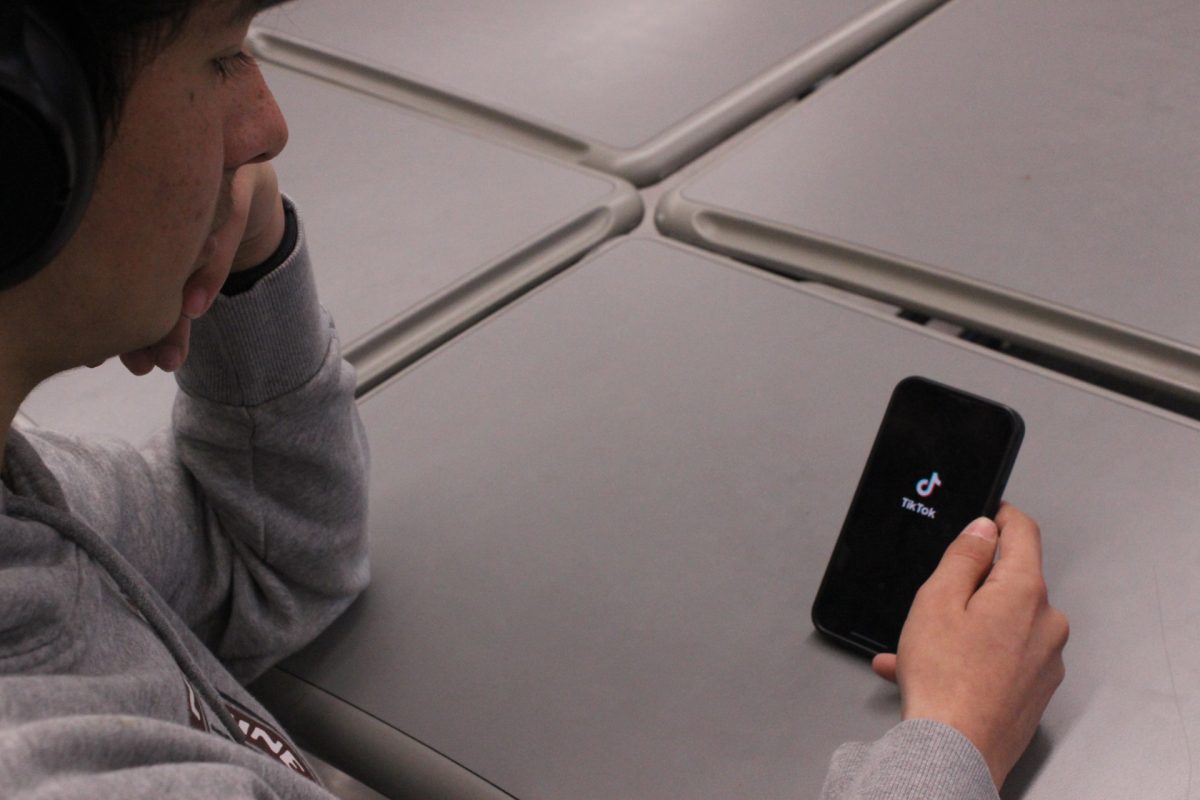Junior Benjamin Recinos has recently been aware of harmful dyes, chemicals and substances in everyday foods leading him to avoid foods like Hot Cheetos, Gatorade and Skittles. After doing research, Recinos has completely changed his eating habits and wants to bring awareness to this growing issue now.
“Studies have shown that there are several risks when eating these artificial flavors and dyes and it’s just not something I want to put into my body,” Recinos said. “I just try to avoid them as much as possible. I always check food labels since there are a lot of bad ingredients that are snuck into a lot of the foods we eat.”
The California Food Safety Act (Assembly Bill 418) was passed in September 2023 and is planned to go into effect on Jan. 1, 2027. The bill, written by Assembly Member Jesse Gabriel, prohibits the use of four chemicals found in processed foods or drinks. This act will result in the ban of food being manufactured or sold containing red dye 3, potassium bromate, brominated vegetable oil and propylparaben to protect consumers who purchase these products that are unaware of the harmful substances they intake.
“The governor’s signature today represents a huge step forward in our effort to protect children and families in California from dangerous and toxic chemicals in our food supply,” Gabriel said in a press release. “It’s unacceptable that the U.S. is so far behind the rest of the world when it comes to food safety. This bill will not ban any foods or products – it simply will require food companies to make minor modifications to their recipes and switch to the safer alternative ingredients that they already use in Europe and so many other places around the globe.”

In popular snacks and foods, people tend to overlook the contents of their favorite snacks. Allura Red AC (Red Dye 40) is one of the most common synthetic food dyes found in numerous processed foods people consume daily. Though it is approved by the Food and Drug Administration (FDA) and is seen as a minimal issue, several countries in Europe have banned Red Dye 40 as they are concerned about the consumption of synthetic dye. This dye goes by several names, including CI Food Red 17, Red 40 Lake or E129, and is in a multitude of products people consume every day. Some foods that use Red Dye 40 include chips, energy drinks, cereals and cakes. According to the Healthline article “Red Dye 40: Safety, Side Effects, and Food List,” consumption of this dye has been linked to gut inflammation, migraines or allergic reactions.
“The presence of food dyes and flavoring factor my purchasing decisions greatly, especially when I’m shopping for my daughters,” Magnet Coordinator James Morrison said. “The truth of the matter is that it’s so inundated through the system that it’s hard to avoid completely.”
Recently, energy drinks have also been a growing health concern, especially for young adults. According to an article by Harvard T.H, energy drink advertisements are seen as appealing to students cramming for finals or those who feel a lack of energy throughout the day. Though it seems like a quick fix, it has been shown to cause more harm than good. The amount of caffeine and sugar alone in a singular drink is enough to cause elevated blood pressures, anxiety, dehydration and result in irregular heart rhythms. Many energy drink brands sponsor celebrities or influencers to promote these products that heavily affect their viewers, especially younger audiences.
Senior Alejandra Iniguez is used to drinking energy drinks to keep her energy levels high throughout the day. After a shocking personal experience, she has started trying to limit her intake to avoid any other side effects and scares.
“I buy energy drinks two to three times a week,” Iniguez said. “The main reason is because they boost my energy. But one time I drank half a bottle of a Monster energy drink and my heart was racing so fast. I thought I was going to have a heart attack so I switched to Celsius and limited myself to drinking half a bottle instead. I don’t really have any concerns about what’s inside it but I should look into it so I know what I’m drinking.”















